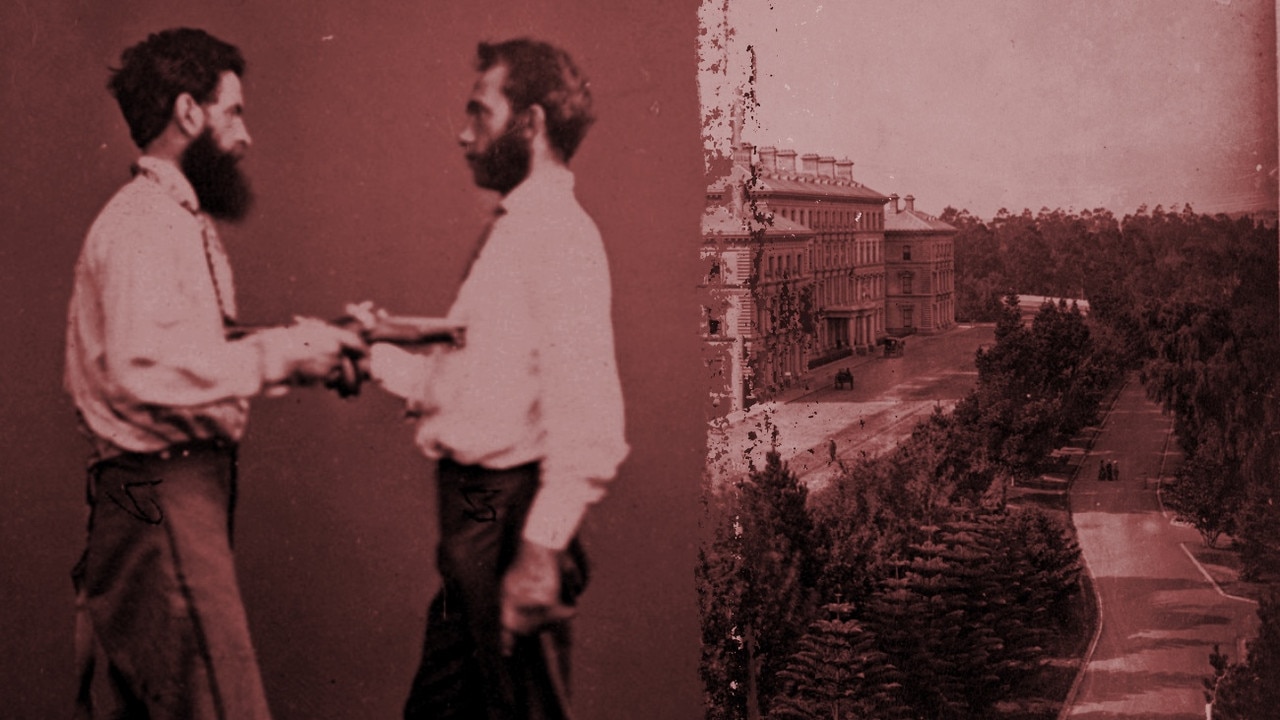How round the world flights have changed in 60 years since first Melbourne to London flight
THE first round-the-world flights took off from Melbourne to London in 1958, with up to seven stops along the way. See how flying has changed from the days of overnight fuel stops and ‘flying boats’.
Melbourne
Don't miss out on the headlines from Melbourne . Followed categories will be added to My News.
THE rumble of two Qantas round-the-world flights taking off from Essendon Airport 60 years ago heralded a new era of air travel for Melbourne and Australia — but bolder changes were just around the corner.
PUBLIC TRANSPORT: FULL LIST OF PLANNED DISRUPTIONS
MELBOURNE TRAFFIC: GUIDE TO SUMMER ROADWORKS
ESCAPE: WORLD’S BEST AND WORST AIRLINES RATED
Although Qantas had been taking passengers on flights from Sydney to London for many years, Melbourne’s only international flights were to New Zealand.
Until the mid-1940s, Qantas used planes known as “flying boats” for the flight to London — a flight that landed on the water and took about 14 days and required more than 40 stops along the way.


Then, in 1947, came the British-made, propeller-driven Lockheed Constellation, a much larger and more powerful passenger aircraft, and the advent of Qantas’ Kangaroo Route westward across Asia and Northern Africa with stops in Darwin, Singapore, Kolkata, Karachi, Cairo and Tripoli. Passengers stayed overnight in Singapore and Cairo.
A two-night flight was a big improvement, and the flight times reduced further with the advent of the later Super Constellation aircraft, down to around 64 hours for the fastest trip recorded.
RADICAL: HOW FLYING WILL CHANGE IN 2018

Big changes came on January 14, 1958, with the launch in Melbourne of Qantas’ first round-the-world flights to London on two vastly different routes.
These made Qantas second only to BOAC (the modern British Airways) as a round-the-world airline.
For the first time, Melbourne was an international airline destination.
The routes included many stops on the way
One of the flights headed for Sydney before heading to London via the Kangaroo Route.
The other used a new Southern Cross Route, which took passengers to Sydney and then island hopping across the Pacific to the United States via New York on their way to London.
It was the first round-the-world London flight to also include the Big Apple.

More than 1000 people gathered at Essendon, then known as Melbourne Airport, to farewell the flights.
Premier Sir Henry Bolte and Federal Civil Aviation Minister, Senator Shane Paltridge were there too, their wives cutting the ribbons to release the Asian- and Pacific-bound flights respectively.
The flights met at Heathrow Airport in London before returning to Sydney on the opposite route six days later after circumnavigating the globe.




Soon, there were eight round-the-world Qantas flights a week.
Qantas was already planning for the demise of the faithful Super Constellations and the airline’s entry into the jet age.
In July 1959, Qantas became the first airline outside United States to take delivery of the Boeing 707-138 jets, which began flying to the US in July that year, in August and on the Kangaroo Route in October.
These cut travel times from 64 hours to around 34-and-a-half hours, with eight stops.
The end for Essendon Airport
By May 1963, Qantas had sold the last of its Super Constellation fleet.
And the writing was on the wall for Essendon Airport, too.
It had been commissioned as an aerodrome in 1921 and by 1940 it was Australia’s busiest radio-equipped airport.



HISTORY SPECIAL: INSIDE THE SLUMS OF 1930s MELBOURNE
It was renamed Melbourne Airport in 1950 and received its first international flight, from New Zealand, the following year.
But Melbourne’s post-war sprawl was putting pressure on the airport.
Increasing air traffic, especially from jets, pressed the case for expansion but with housing already built right up to the boundary, there was no room to grow.
In 1959, the government approved the purchase of more than 2000 hectares of farm land at Tullamarine for a new, much larger airport capable of handling large jet planes. The site was 10 times larger than Essendon Airport.
Work started in 1964, and Prime Minister John Gorton opened the new airport, at first for international travel, on July 1, 1970. Domestic carriers followed on June 1, 1971.
Further and faster into the 1960s and 1970s
In 1966, Qantas added a new round-the-world route, the Fiesta Route, which took passengers across the Pacific to London via Fiji, Tahiti, Mexico City, Acapulco, Nassau and Bermuda.
Melbourne was truly connected to the world.


By the early ‘70s, Qantas had plenty of competition from overseas carriers for flights to and from Australia, but it was ready. It introduced the Boeing 747-200B aircraft in September 1971.
The Jumbos were bigger, faster and capable of making the Kangaroo Route hop with one stop.
Fares began to fall, making air travel more accessible for more people, and fashions began to change too.
In the days of the Super Constellations, passengers dressed formally but by the 1970s, dressing for comfort became more common.

UNDERGROUND: HOW THEY DUG THE CITY LOOP
The Kangaroo Route to London was very much preferred by the travelling public and, by the mid-‘70s, the Southern Cross and Fiesta routes faded into history along with Qantas round-the-world services.
The Boeing 747 revolutionised international air travel, especially for the kinds of long-haul services Australians use.
By 1979, Qantas was the only airline in the world with an all-Boeing 747 fleet.

The modern age of international air travel
These days, the 747 is a relic but it helped to make international travel a realistic option for many more people.
That democratisation of air travel has only increased for Australians since the 1970s.
Unlike the golden age of aviation 60 years ago, flying overseas is less of an occasion.
Take a look around the international terminal at Tullamarine these days.
The notion of dressing in your best garb for a long flight has had its day. It’s tracky dacks, thongs and neck pillows all the way.
Melbourne was little more than a regional hub 60 years ago.
These days, Melbourne is Australia’s second largest international airport, with 29 different airlines ready to take you on flights direct to one of 33 individual international destinations.


Some of the newest air travel options demonstrate just how far air travel has come since the day those to Qantas Super Constellations rumbled down the runway at Essendon.
Take Etihad Airways’ The Residence — a three-room high-flying palace that boasts the meals and champagne of your choice, luxury leather seating, a private bathroom with its own shower and a comfy bed for two. Tracky dacks are strictly optional.
Qantas long-haul flights to London and the United States will look different aboard the new Boeing 787-9 Dreamliner.
The Dreamliner is a carbon fibre-bodied aircraft that Qantas says will use 70 per cent less fuel than other aircraft of a comparable size.
It will have 236, fewer than similar aircraft, but Qantas says this will offer passengers more space to enjoy creature comforts including a full in-seat entertainment system and windows that 65 per cent larger than on comparable aircraft.
We’re light years from the Super Constellations of 60 years ago.
@JDwritesalot


